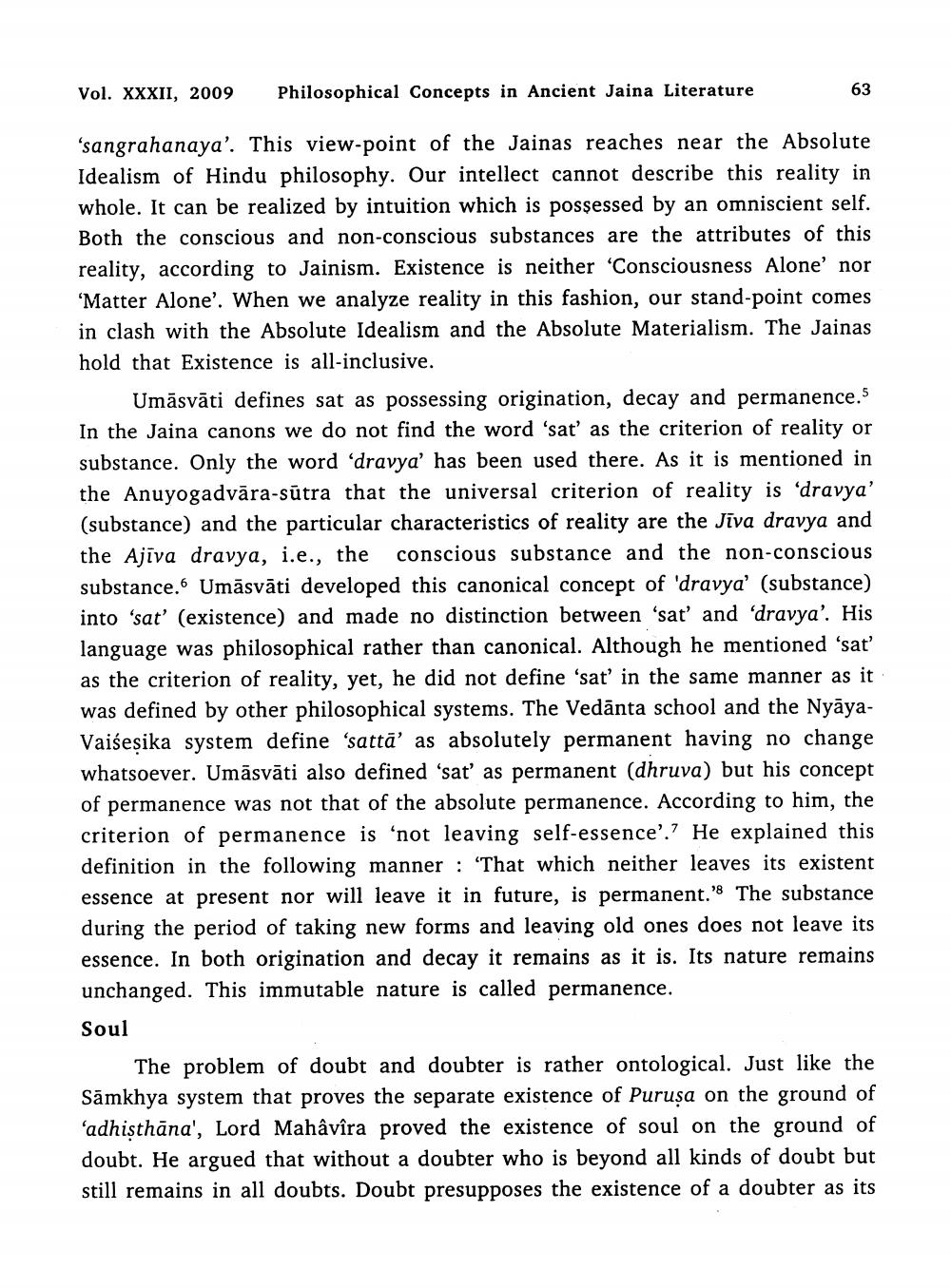________________
Vol. XXXII, 2009
Philosophical Concepts in Ancient Jaina Literature
63
'sangrahanaya'. This view-point of the Jainas reaches near the Absolute Idealism of Hindu philosophy. Our intellect cannot describe this reality in whole. It can be realized by intuition which is possessed by an omniscient self. Both the conscious and non-conscious substances are the attributes of this reality, according to Jainism. Existence is neither 'Consciousness Alone' nor 'Matter Alone'. When we analyze reality in this fashion, our stand-point comes in clash with the Absolute Idealism and the Absolute Materialism. The Jainas hold that Existence is all-inclusive.
Umāsvāti defines sat as possessing origination, decay and permanence.5 In the Jaina canons we do not find the word 'sat' as the criterion of reality or substance. Only the word 'dravya' has been used there. As it is mentioned in the Anuyogadvāra-sūtra that the universal criterion of reality is 'dravya' (substance) and the particular characteristics of reality are the Jiva dravya and the Ajīva dravya, i.e., the conscious substance and the non-conscious substance. Umāsvāti developed this canonical concept of 'dravya' (substance) into 'sat' (existence) and made no distinction between 'sat' and 'dravya’. His language was philosophical rather than canonical. Although he mentioned 'sat' as the criterion of reality, yet, he did not define 'sat' in the same manner as it was defined by other philosophical systems. The Vedānta school and the NyāyaVaišesika system define 'sattā' as absolutely permanent having no change whatsoever. Umāsvāti also defined 'sat' as permanent (dhruva) but his concept of permanence was not that of the absolute permanence. According to him, the criterion of permanence is 'not leaving self-essence'.? He explained this definition in the following manner : 'That which neither leaves its existent essence at present nor will leave it in future, is permanent.' The substance during the period of taking new forms and leaving old ones does not leave its essence. In both origination and decay it remains as it is. Its nature remains unchanged. This immutable nature is called permanence. Soul
The problem of doubt and doubter is rather ontological. Just like the Sāmkhya system that proves the separate existence of Puruṣa on the ground of 'adhisthāna', Lord Mahâvîra proved the existence of soul on the ground of doubt. He argued that without a doubter who is beyond all kinds of doubt but still remains in all doubts. Doubt presupposes the existence of a doubter as its




